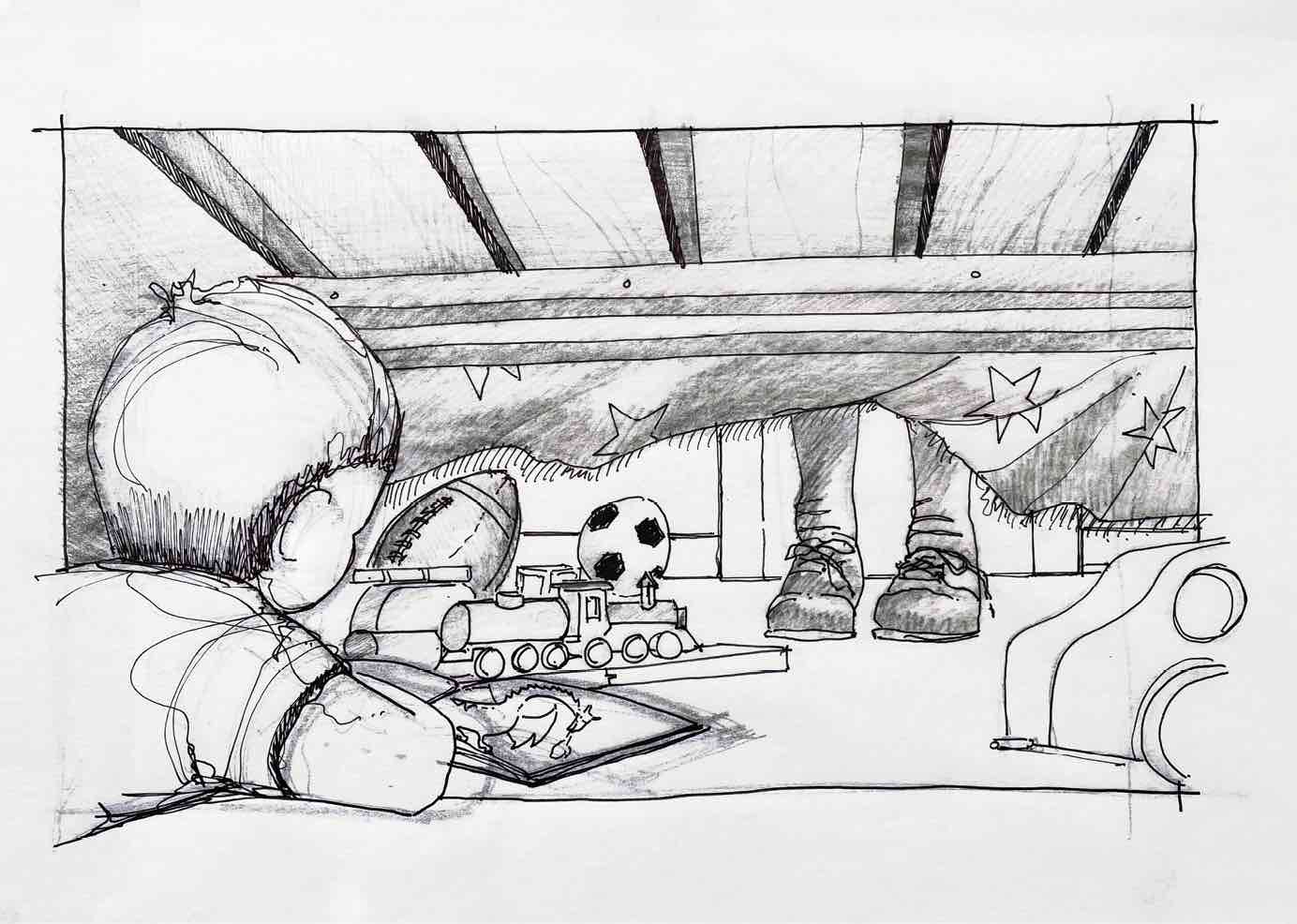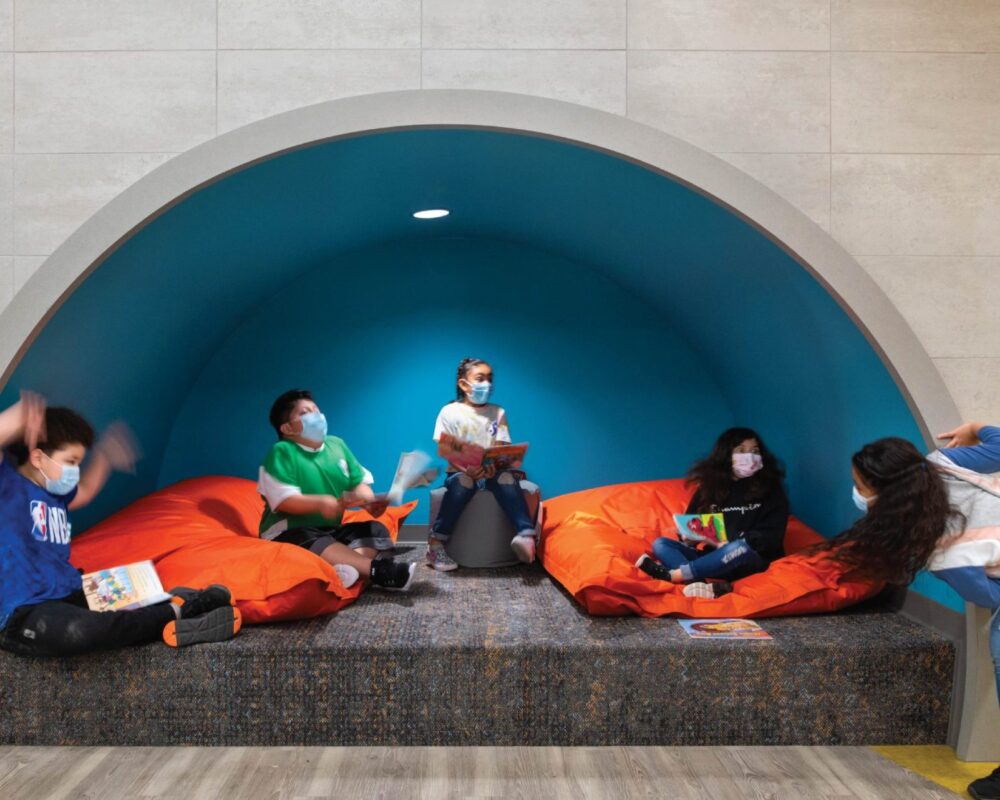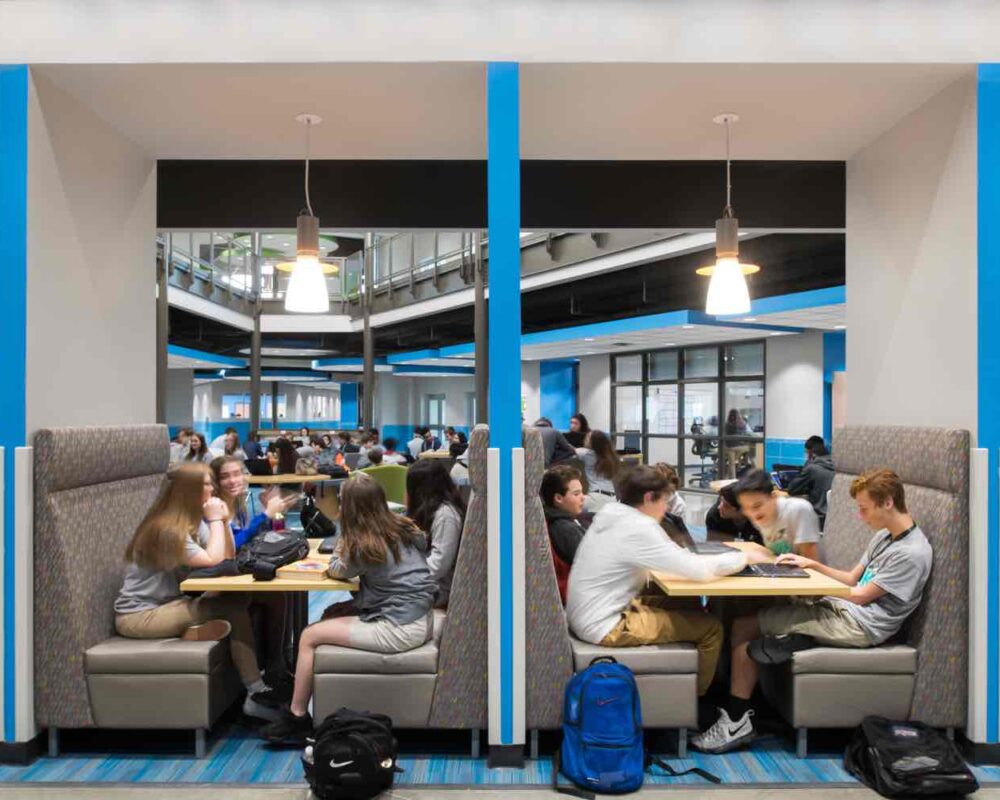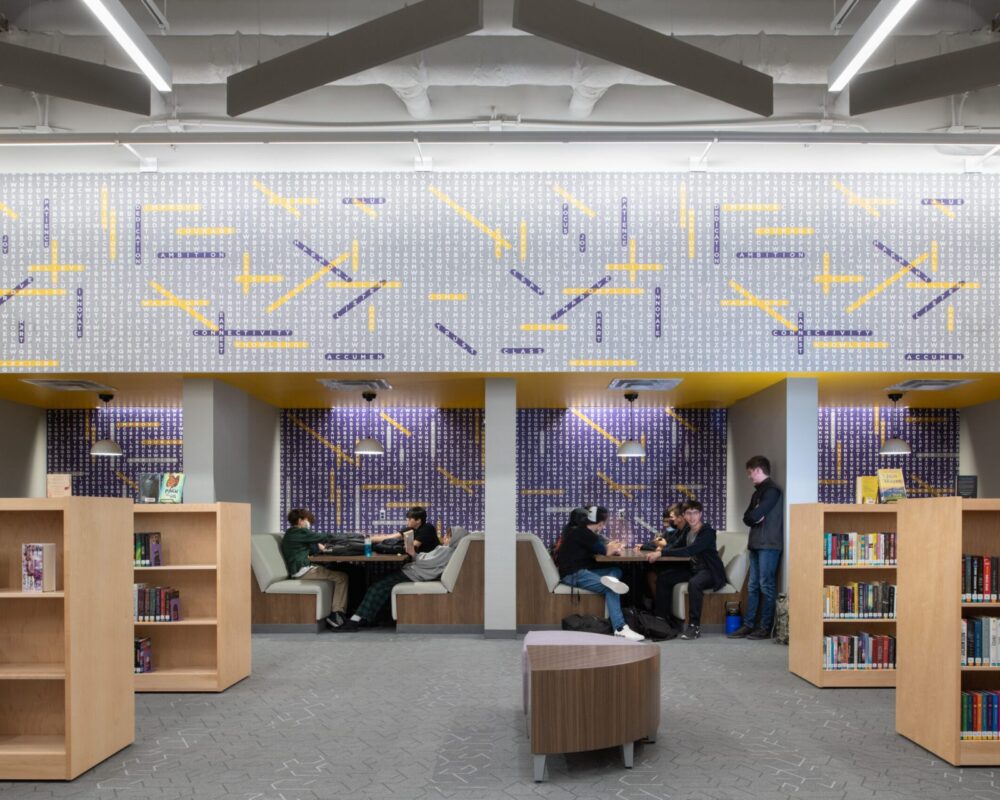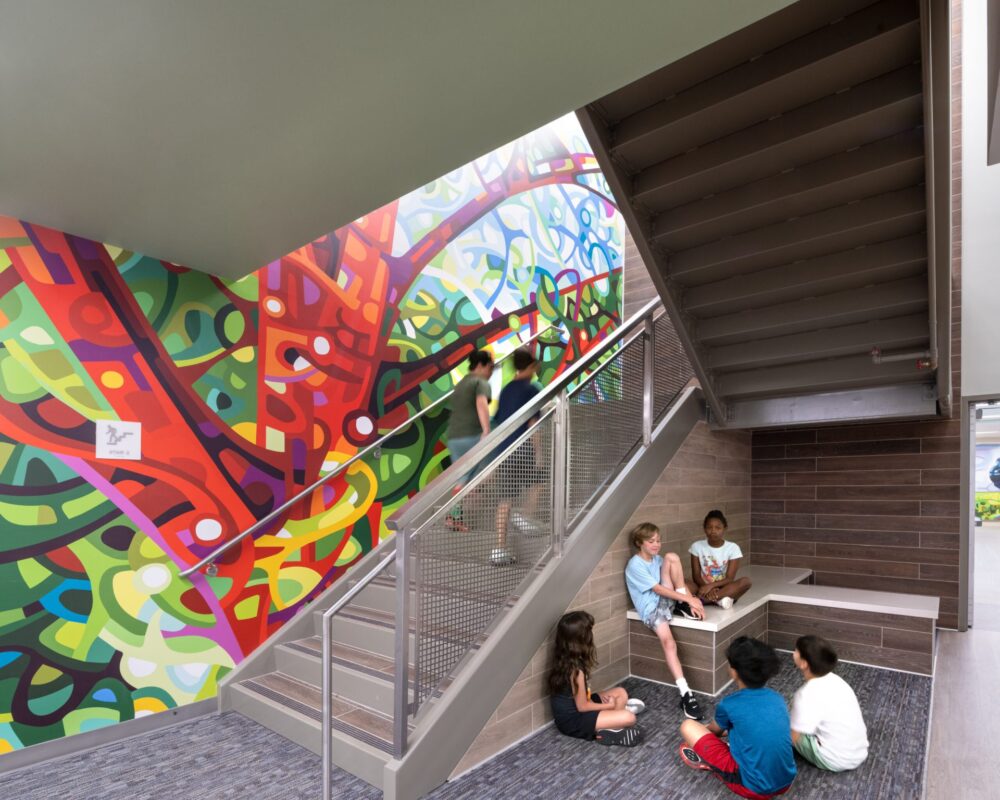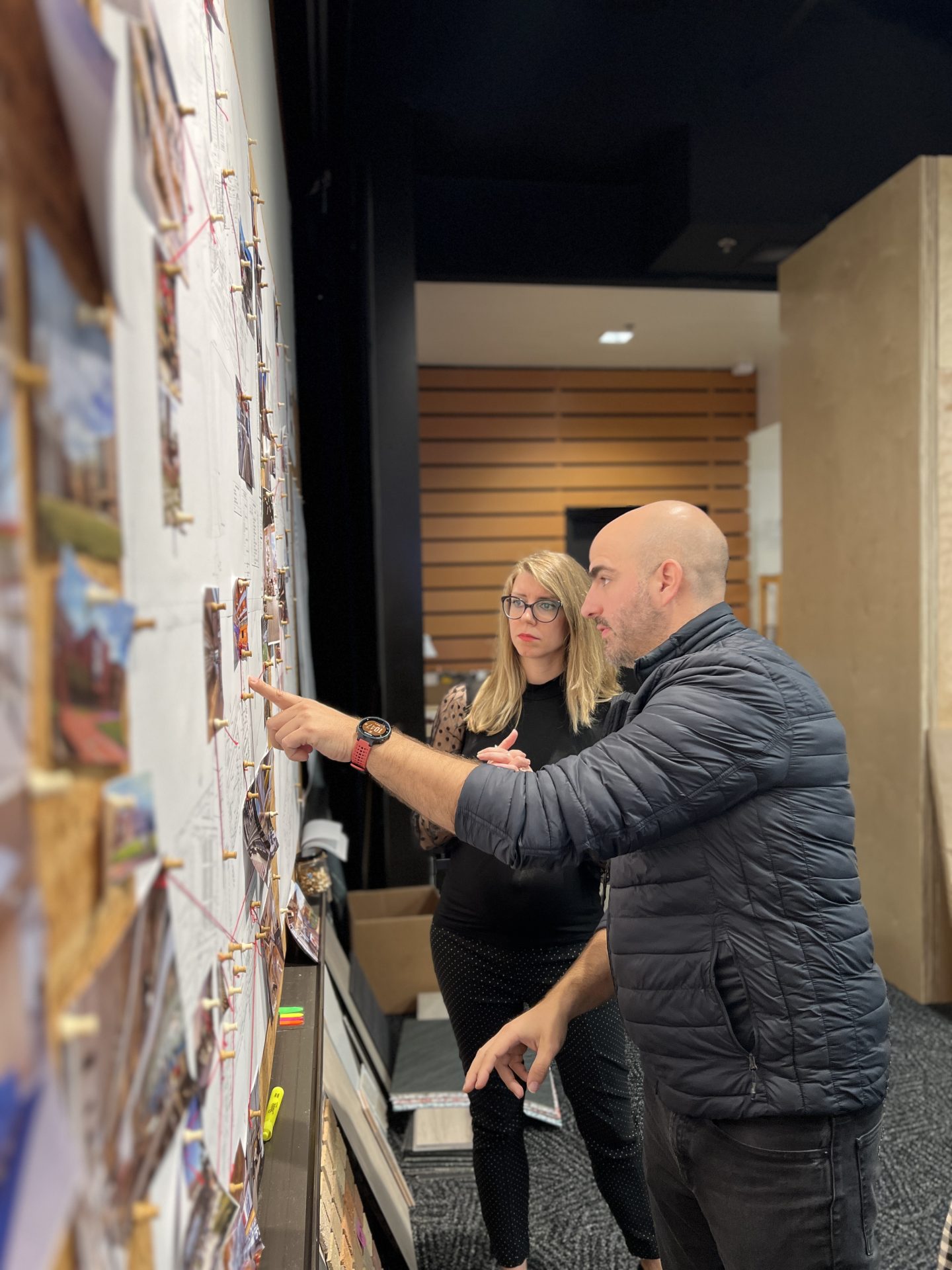By Mark Lam, Ph.D., AIA, LEED AP
As children, there is something magical about small spaces—forts made of sheets thrown over the kitchen table, the cardboard box that delivered mom’s new washing machine, or in my case, the potential worlds under grandma’s old iron bed.
Grandma’s sewing room was one of the largest rooms in the house, and while she had a formal living room, that sewing room was where real family gatherings took place. It had a fireplace along one wall, an old Singer sewing machine sitting on a utility table opposite, and an old TV with rabbit ears perched on a small cart with clear plastic wheels in the corner. The room had several well-worn chairs and at the back was a giant, cast-iron bed.
This wasn’t just any old bed; this was a bed with mattresses piled so high that a small boy felt like he’d summited Kilimanjaro after clamoring to the top. The top was rounded from layers of bedding hidden under mounds of knitted pillows and a handmade quilt folded across the foot.
My parents, grandparents, and an assortment of aunts and uncles would sit around for hours and do nothing but talk. As a small child, I’d quickly get bored listening to them talk about friends and family not in attendance. They would regale each other with stories about the “old days,” and I would be quickly forgotten as I played with my toys on the floor. So, what exactly would a small, bored boy find to do—he would search for and usually find or invent an adventure.
I don’t remember the first time I peeked under the fringe of the bedspread that covered that giant bed, but when I did, I found an adventure. Under that bed, I created a secret world that was just mine, and no one else knew it was there. With the bedspread hanging like a curtain, I found a quiet and cozy space that was perfectly sized for me.
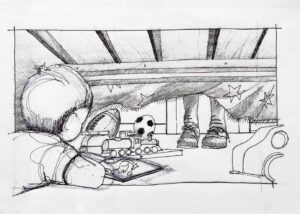
A sketch of the point of view from under the bed. | by Christian Owens
Because it was my secret hideout, half the adventure was sneaking in and out—both critical maneuvers that required careful planning and precise timing. If Aunt Midge went in search of the shoe she kicked off at the same second I scurried from under the bed to retrieve my Hot Wheels—Well, the secret hideout wouldn’t be secret any more, and that was half the fun.
The other half was imagining the daring deeds and imminent danger of cloistering under the low ceiling created by the bed’s narrow wooden slats that held up all those mattresses, bedding, pillows, and quilts. Occasionally someone would sit or lay down on top—the slats would creak and groan under the strain and I just knew they would snap at any moment, crushing me and my toys beneath thousands of pounds of linens!
Under that bed, I was magically transported to a world all my own. A world that gave me a floorshow of a different kind as I peeked out from under the bedspread fringe. I would watch a tableau of shoes—each with a personality and voice. The brown oxford had a deep voice and would tap impatiently on the floor when conversation dragged. The cream-colored pump had a high-pitched voice that would purr when it escaped from the swollen feet that held it captive.
When the floorshow got boring, I’d smuggle in toys to play with on the big, colorful rug the bed stood on. It was an oval braided rug, that my little boy’s mind thought looked like a cinnamon roll. (Grandma made great cinnamon rolls!) That rug served as any number of landscapes for my little imagination.
Sometimes it was a racetrack for my cars to speed down the straightaway before crashing into the wall as they tried to negotiate the broad banking curve. Sometimes, those braids would be rows of crops for my tractors, sometimes a football field as the running back streaked down the field for a touchdown. Sometimes, my army men, marching in formation around the curve,
would be ambushed by rubber bands when the road straightened, and they couldn’t find cover.
Year after year, I would escape under that bed until the day finally came when I could no longer fit through the fringed curtain that let to my hideaway.
As an adolescent now trapped in the grown-up world, I would sit by the fireplace and listen to the grown-ups talk. From time to time, I’d glance at that old iron bed and remember just what it was like to hide beneath its massive form and wonder if any soldiers were still there.
We have all likely been there—we’ve played in a box, a treehouse, or concrete drainage pipe—a shared memory of childhood that revolves around those special, small places of our childhood.
As architects, we resurrect those memories and use them as inspiration to deconstruct these unique places in an effort to better understand the emotional triggers and physical elements that spark creativity and imagination.
Whether it be a small and cozy place to study or a majestic cavernous space to explore, architects should thoughtfully and purposefully define spaces and components that include the physical and psychological impact each space has on creating a meaningful human experience.
